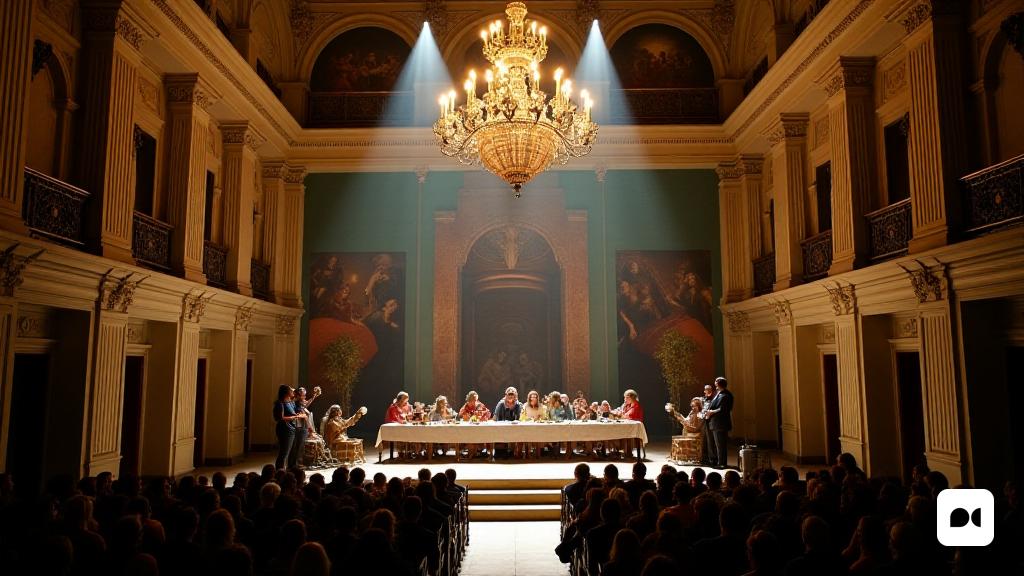A TRESOR OCULT A Barcelona
Hidden between the bustling life of Las Ramblas and Carrer de la Portaferrissa, the Moja Palace is an impressive example of the Catalan architectural heritage. While the ground floor houses the Moja Space, a busy exhibition space, its upper floors remain closed to the public except on special occasions.
Interviews: A fusion of art and heritage
The Interview Festival, organized by the Catalan Agency for Cultural Heritage, allowed a select group of attendees yesterday to access the Vigatà Hall to enjoy the show ‘El Salto del Ciervo’, by Inés Boza and Edurne Arizu. This initiative, which celebrates its second edition, aims to unite the architectural roots of Catalonia with contemporary performing arts.
Immersive experiences and reflections
Attendees were received in an initial room that, despite their greatness, did not meet the expectations created by the promotional images. However, the organizers reassured the public, promising a unique experience in the Vigatà Hall, a space that stands out for its majesty.
A space loaded with history
The Vigatà Hall, with impressive ceilings and elaborate decorations, is a testament to eighteenth -century neoclassicism. Its importance lies not only in its architecture, but also its ability to become a scenario for creativity and reflection.
An abstract narrative
The show started with Boza sharing his memories of previous shows, using symbolic objects that connected the past to the present. His performance explored themes of memory and community, with images of old dances that were projected on the walls of the show.
An innovative soundtrack
Arizu, in charge of music, combined traditional elements with modern touches, creating a unique auditory experience that complemented the visual narrative. The fusion of styles, which included electronic music and sounds of traditional instruments, enriched the atmosphere of the show.
Dialogue with the public
After the performance, an exchange with the public opened the door to reflections on the nature of art. An assistant expressed his confusion about the narrative, but Boza clarified that the goal was not to follow a rigid plot line, but to explore several ideas that formed a conceptual mosaic.
An invitation to the discovery
The festival interviews not only stands out for its artistic proposal, but also invites reflection on cultural heritage and its relevance today. With its programming, the Catalan Agency for Cultural Heritage not only preserves the past, but also reinvents it for new generations.
For those interested in discovering more on this cycle, tickets are free, but they must be reserved through the website of the Catalan Agency for Cultural Heritage.

